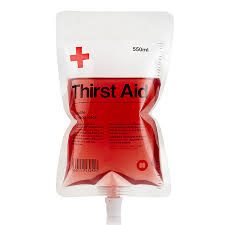A new type of bone marrow stem cell in mice that is primed to produce large numbers of vital blood-clotting platelets has been discovered.
Lack of platelets is a common side effect in cancer patients.
The breakthrough could lead to the development of new treatments to restore platelets in patients who have undergone chemotherapy or a bone marrow transplant.
A team funded by the Medical Research Council (MRC), and led by scientists at Oxford University’s MRC Weatherall Institute of Molecular Medicine, has reported the discovery in the journal Nature.
Blood cells are made by a small pool of stem cells in the bone marrow, which replenish the blood at a rate of millions of cells per second. These cells can copy themselves (self-renew) and give rise to all the different cell types that make up the blood system, including white and red blood cells, and platelets.
Platelets help the blood to clot by clumping together at the site of bleeding. Having too few platelets can result in excessive bleeding and is a common side effect in cancer patients, whose natural reservoir of platelets has been destroyed by the disease or by treatment. This can be life-threatening in the weeks immediately following chemotherapy or a bone marrow transplant as it takes time for blood stem cells to replenish platelets to safe levels.
Many patients who undergo these treatments are given platelet transfusions to protect them from bleeding. But donated platelets can only be stored for a few days and demand often outstrips supply. Researchers have therefore been looking for a way to rapidly and durably increase the production of platelets to reduce the risk of bleeding.
‘We used to think that there was just one type of blood stem cell that could self-renew and give rise to all the different cell types in the blood. But here we’ve identified a new type of stem cell that is very driven, at a molecular and functional level, towards making platelets,’ said Professor Sten Eirik Jacobsen of Oxford University’s MRC Weatherall Institute of Molecular Medicine who led the research with Claus Nerlov.
‘Now that we know these cells exist, we can start thinking about devising new strategies to enhance platelet output – either by generating and transplanting more of this type of cell into a recipient, or by somehow stimulating their own pool of stem cells to restore platelet levels more quickly. But first we need to see whether we can find the same cells in human tissue and understand more about how they are regulated.’
The researchers found that different subtypes of blood stem cell are organized into a hierarchy, with platelet-primed cells at the top. These platelet-primed cells are able to also replenish other stem cell types that mostly generate the vital blood cells of the immune system. Transplanting just one platelet-primed stem cell into mice that lacked their own bone marrow was enough to stably restore more than 10% of their platelets. Future studies by the group will focus on whether this can be achieved quickly enough to benefit patients in a clinical transplantation setting.
The research was partially carried out at the MRC Centre for Regenerative Medicine at the University of Edinburgh and the EMBL Mouse Biology Programme, Italy.







